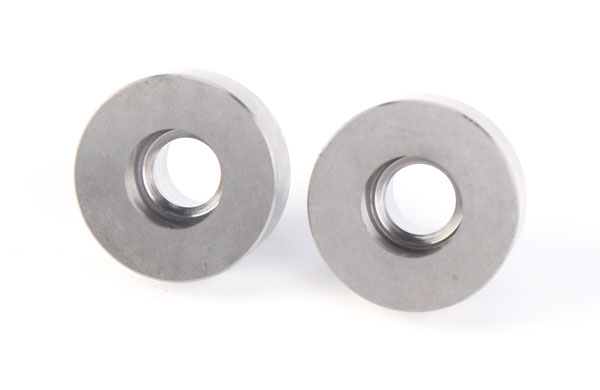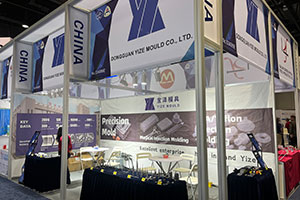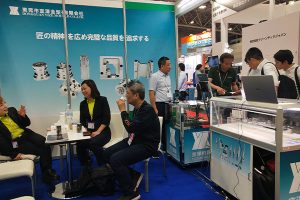How to Maintain the Stability of Tungsten Carbide Dies in High-Speed Cutting
I. Introduction In modern manufacturing, high-speed cutting technology is widely applied in the processing of various materials due to its characteristics of high efficiency, high precision, and high quality. Tungsten […]
I. Pendahuluan
In modern manufacturing, high-speed cutting technology is widely applied in the processing of various materials due to its characteristics of high efficiency, high precision, and high quality. Tungsten carbide dies play a crucial role in high-speed cutting because of their high hardness, excellent wear resistance, and good mechanical properties. However, during high-speed cutting, tungsten carbide dies are subjected to immense cutting forces and thermal loads, which can easily lead to deformation, wear, and even fracture of the dies. This, in turn, seriously affects the machining quality and the service life of the dies. Therefore, how to maintain the stability of tungsten carbide dies in high-speed cutting has become an urgent problem to be solved in the manufacturing industry. This article will explore measures to maintain the stability of tungsten carbide dies in high-speed cutting from the aspects of material selection, structural design, cutting parameter optimization, cooling and lubrication, as well as maintenance and upkeep.
II. Material Selection for Tungsten Carbide Dies
The material selection of tungsten carbide dies is the foundation for ensuring their stability. High-quality tungsten carbide materials should possess high hardness, excellent wear resistance, good toughness, and thermal stability. When selecting tungsten carbide materials, it is essential to fully consider the specific requirements of the cutting process and the working environment of the dies. For example, for dies working in high-temperature environments, tungsten carbide materials with good thermal stability should be chosen. In dies subjected to large cutting forces, tungsten carbide materials with high toughness are preferred. Additionally, the purity and microstructure of the materials are also important factors affecting the stability of the dies. Materials with fewer impurities and a uniform microstructure should be selected.
Bisnis pabrik kami: suku cadang karbida, suku cadang cetakan, cetakan injeksi medis, cetakan injeksi presisi, cetakan injeksi PFA teflon, alat kelengkapan tabung PFA. email: [email protected],whatsapp:+8613302615729.
III. Structural Design of Tungsten Carbide Dies
The structural design of tungsten carbide dies has a crucial impact on their stability. During the design process, factors such as cutting forces, thermal loads, as well as the stiffness and strength of the dies should be fully considered. A reasonable structural design should be able to effectively resist the effects of cutting forces and thermal loads, maintaining the stability and precision of the dies. Here are some specific structural design measures:
- Reinforcing Rib Design: Adding reinforcing ribs at key parts of the die can improve its stiffness and strength, reducing the risk of deformation and fracture.
- Optimizing Wall Thickness: Reasonable wall thickness design can reduce stress concentration and thermal deformation in the die, enhancing its stability and service life.
- Round Corner Design: Using round corners at the edges and corners of the die can reduce stress concentration and wear, improving the durability of the die.

IV. Optimization of Cutting Parameters
The selection of cutting parameters has a direct impact on the stability of tungsten carbide dies. In high-speed cutting, the selection of cutting speed, feed rate, cutting depth, and other parameters should fully consider the material properties, structural characteristics, and cutting conditions of the dies. Reasonable cutting parameters should be able to reduce cutting forces and thermal loads while ensuring machining quality, thereby minimizing the wear and deformation of the dies. Here are some suggestions for cutting parameter optimization:
- Selecting an Appropriate Cutting Speed: Excessively high cutting speeds can lead to an increase in cutting forces and thermal loads, reducing the stability of the dies. Therefore, when selecting the cutting speed, comprehensive consideration should be given to the material properties and cutting conditions of the dies.
- Controlling the Feed Rate: The feed rate directly affects the generation of cutting forces and cutting heat. An appropriate feed rate can reduce cutting forces and thermal loads, improving the stability of the dies.
- Adjusting the Cutting Depth: The cutting depth has a significant impact on the wear and deformation of the dies. Excessively large cutting depths can cause a rapid increase in the surface temperature of the dies, leading to stress concentration and increased wear. Therefore, the cutting depth should be appropriately controlled during the cutting process.
V. Cooling and Lubrication
Cooling and lubrication are important measures for maintaining the stability of tungsten carbide dies. During high-speed cutting, cutting heat causes the surface temperature of the dies to rise, which in turn affects their performance and service life. Therefore, effective cooling and lubrication measures can lower the surface temperature of the dies, reducing thermal deformation and wear. Here are some suggestions for cooling and lubrication:
- Using Cutting Fluid: Cutting fluid can effectively reduce the cutting temperature and friction coefficient, minimizing thermal deformation and wear. During the cutting process, appropriate cutting fluid should be selected according to the cutting conditions and die materials.
- Cooling System Design: The design of the cooling system should be optimized to ensure that the cooling fluid is evenly distributed on the surface of the dies, lowering their overall temperature.
- Regular Inspection of the Cooling System: The operating status of the cooling system should be regularly inspected to ensure that parameters such as the flow rate, temperature, and pressure of the cooling fluid are within the normal range.
VI. Maintenance and Upkeep
Maintenance and upkeep are key to maintaining the stability of tungsten carbide dies. During use, regular cleaning, inspection, repair, and maintenance of the dies can help identify and address potential problems in a timely manner, extending their service life. Here are some suggestions for maintenance and upkeep:
- Regular Die Cleaning: Remove oil stains, chips, and impurities from the surface of the dies to keep them clean and smooth.
- Inspecting Die Wear: Regularly inspect the wear condition of the dies and promptly replace severely worn parts or the entire die if necessary.
- Regular Heat Treatment: Perform heat treatments such as annealing and quenching on the dies to eliminate internal stresses and improve material properties.
- Establishing a File Management System: Establish a file management system for the use and maintenance of the dies, recording information such as their usage, maintenance, and service life to provide a basis for die management and maintenance.
VII. Kesimpulan
Maintaining the stability of tungsten carbide dies in high-speed cutting is a complex and important issue. By selecting appropriate materials, optimizing structural design, optimizing cutting parameters, adopting effective cooling and lubrication measures, and strengthening maintenance and upkeep, the stability and service life of tungsten carbide dies can be significantly improved. In the future, with the continuous development of the manufacturing industry and technological innovation, it is believed that more advanced technologies and methods will be applied to maintain the stability of tungsten carbide dies.
Posting Terkait
- Application and Effects of Wear-Resistant Coatings on Tungsten Carbide Dies
- Evaluation and Improvement Directions of the Environmental Performance of Tungsten Steel Molds
- Evaluation and Improvement Directions for the Environmental Performance of Tungsten Carbide Dies
- Comprehensive Analysis of Methods and Standards for Quality Inspection of Tungsten Carbide Dies






